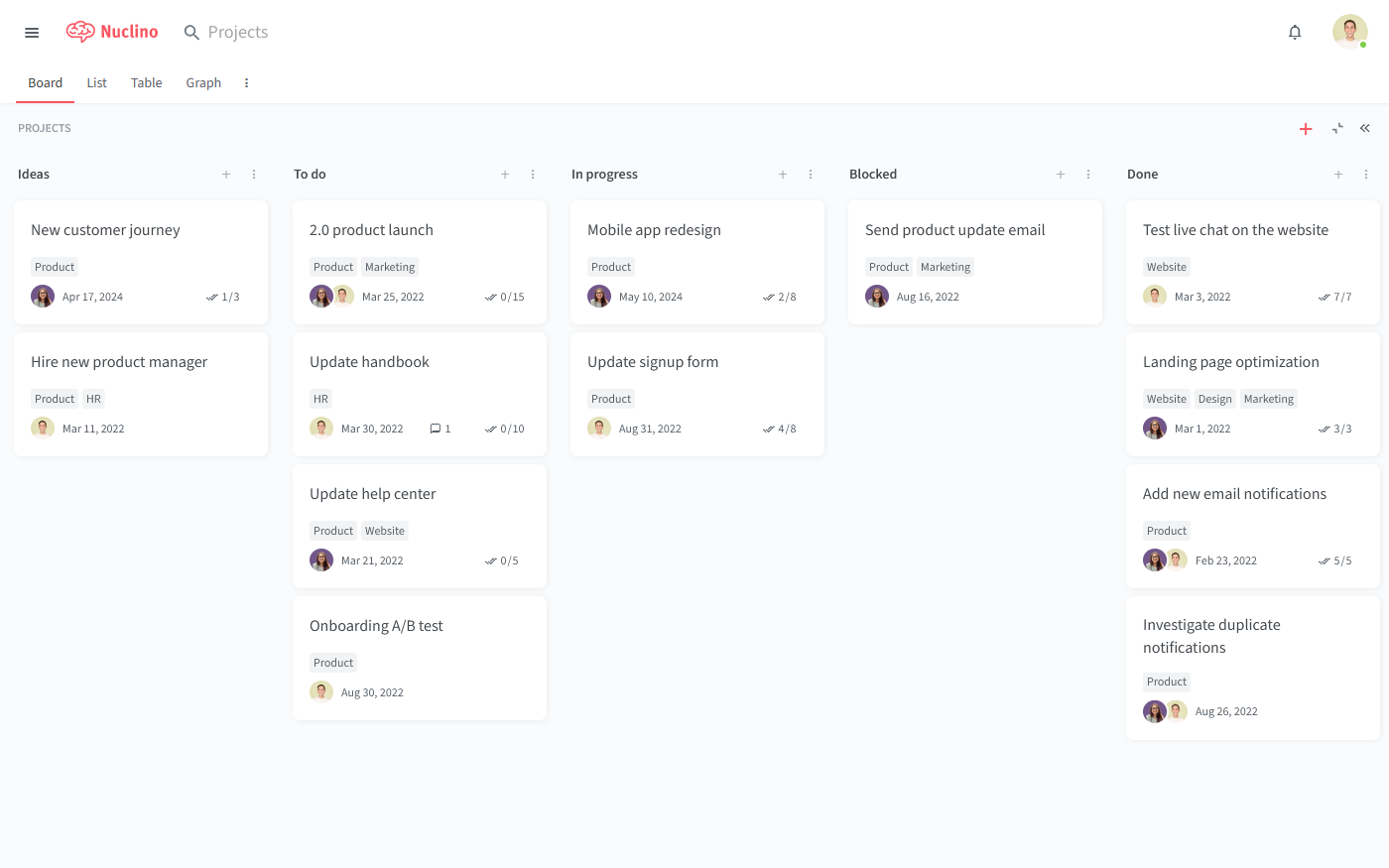A Guide to New Employee Onboarding Process
Ensure that your new team members' first weeks go smoothly.
Employee onboarding is the first impression a new hire has as an official member of your company, and according to recent research, 80% of new hires who receive poor onboarding plan to quit — especially if they’re remote workers.
A shocking number of companies that sink thousands of dollars in recruiting new talent spend very little time or money on employee onboarding once a new hire has signed their contract.
So let's dive deeper into what a good employee onboarding process looks like and why it needs to be a core part of your human resource management strategy.
- Why you need an employee onboarding process
- Onboarding process steps
- Best onboarding practices
- Virtual onboarding process
Why you need an employee onboarding process
According to a study conducted by CareerBuilder, Baby Boomers’ average job tenure is 8 years and 3 months, Gen Xers’ is 5 years and 2 months, millennials’ is 2 years and 9 months, and Gen Zers’ is 2 years and 3 months. Younger workers are expected to change jobs dozens of times over the course of their careers, making employee retention one of the key challenges companies face today.

Yet many HR managers still have the mindset once a contract is signed their job is done. Onboarding is often neglected or reduced to a simple first-day orientation session and a print out of the employee handbook.
To fully grasp the importance of a well-planned employee onboarding process, it's enough to look at what some of the recent statistics:
88% of employees think their employer did a poor job with onboarding. (Gallup, 2017)
A strong onboarding is shown to improve new hire retention by 82% and productivity by over 70% (Glassdoor, 2015)
20% of new hires leave a job for a new opportunity within the first 45 days. (HCI, 2019)
The average cost to fill a position is $4,700. (SHRM, 2022)
69% of employees are more likely to stay with a company for three years if they experienced great onboarding. (SHRM, 2017)
Poor onboarding can have many disastrous effects. It can lower the employee's performance, damage their impression of your company, and result in high turnover rates. A thorough employee onboarding process, on the other hand, can significantly increase employee productivity, job satisfaction, and retention. Yet, many employers still neglect it.
Onboarding process steps
Ideal onboarding begins from the moment an offer is made to the employee until the time the employee becomes a productive member of the organization. And when it comes to onboarding new employees, the most powerful tool at your disposal is a simple one – a checklist.
A new employee onboarding checklist can take many forms but it usually covers the following onboarding steps:
Preparations before the first day: This usually includes signing relevant paperwork, preparing the necessary software and hardware, making arrangements with the new employee's future supervisor or mentor, and so on. Don't forget to stay in touch with the new employee and share with them the information they might find helpful during their first day.
Team introduction: Often, a new employee will arrive during a busy working week. Notify your colleagues in advance and make sure everyone has time to give the new employee a warm welcome. Give them a chance to get to know each other in an informal setting by setting up a team lunch.
Office tour: A tour around the office is a traditional part of every new hire orientation program. Let them know where all the important areas and facilities are, including the bathroom and the kitchen.
1-on-1 with the supervisor or mentor: After your new employee has settled, invite them to a 1-on-1 meeting with their supervisor or mentor so you can give them an introduction into your company culture, clarify your expectations for them, and answer any questions they may have about their new role.
First project: Once your new employee has gotten to know their team and feels comfortable in the workplace, you should be ready to assign their first project. This will ensure they learn the job hands-on and feel valuable to the company, rather than doing menial tasks.
Regular check-ins: Regular check-in meetings are needed to ensure that all expectations are met and all concerns are addressed on both sides. It's one of the best employee retention techniques at your disposal. Make sure to schedule these meetings during your new employee's first months on the job.
Best onboarding practices
There’s no one-size-fits-all approach when it comes to employee onboarding processes. What may work for a large multinational enterprise may not work for a small company. But there are several onboarding best practices that most businesses can benefit from.
Document the onboarding process
Don't make your team managers reinvent the wheel for every new hire – instead, document your existing onboarding process with all its supporting resources and checklists and keep this information easily accessible in your team's internal wiki or intranet portal.

Employee onboarding process documented in a company wiki (created in Nuclino)
Give the new employee access to your company knowledge base
Your new employee will likely have a lot of questions about their new job. Most of them are simple and repetitive: Is there a dress code? What's the vacation policy? How will my performance be evaluated? Instead of making your new team member tap on shoulders, give them access to your business wiki or knowledge base software and empower them to find answers on their own. If your company doesn't have an enterprise wiki yet, you can easily create one in Nuclino.
Check-in with the new hire proactively
Your new employee's first few weeks are a great opportunity for both parties to see if you are a good fit for each other. Don't just monitor your new hire's performance – make sure their expectations are met as well.
Treat it as a celebration, not an administrative task
Nothing can dampen your new team member's enthusiasm more than making the entire onboarding about filling out forms and signing NDAs. Get legal stuff out of the way and make sure the employee knows you are just as excited about their arrival as they are.
Never stop optimizing the onboarding process
Get feedback from both, the team managers and the new employees regularly and use it to continuously improve your onboarding process. If your onboarding process is documented in your corporate wiki or intranet, allow your team to leave feedback directly in the document and keep it up-to-date.

Onboarding checklist to complete on the first day (created in Nuclino)
Virtual onboarding process
Working remotely has gone from a gradually rising business trend to a forced reality for most people in organizations worldwide. Fitting your existing onboarding processes into this new environment may be challenging – after all, how do you make new hires feel welcomed and excited in the absence of office tours, team lunches, and swag bags? How do your new employees learn about your internal workflows without observing their colleagues?
Here are a few tips for making your virtual onboarding as effective and personal as face-to-face:
Find the right online collaboration tools
Most companies already have email and chat tools in place, but they aren't enough. Onboarding new employees virtually means you need to establish a culture of full transparency, online. The easiest way to do it is to adopt a tool that allows you to document all your work – processes, HR policies, decisions, meeting notes, project plans, and everything else that matters. Nuclino aims to be such a tool, allowing you to organize all of your company knowledge, docs, and projects in one unified workspace – create an account and give it a try.

Set up a welcome page for your new employee
While you can schedule face-to-face sessions to share the most important information with your new hire, they will have a lot to digest in a few days. Give them time to learn at their own pace by creating a dedicated page to welcome them to the team and share all the relevant resources – your employee handbook, FAQs, team members' contact information, and so on.

Onboarding checklist and welcome page for new hires (created in Nuclino)
Develop a habit of overcommunicating
Starting a new job is always stressful and it's normal for your new employee to feel anxious during the first few weeks. Some may hesitate to reach out when they are unsure about something – don't wait for them to ask, be proactive and thorough in communicating your instructions, expectations, and impressions. To avoid overwhelming your new team member, embrace asynchronous communication in the form of structured write-ups rather than one-line-at-a-time Slack messages.
Onboarding a new employee can be expensive and time-consuming, but the data doesn’t lie. The effort you put into creating and optimizing your onboarding process will pay off in the form of higher retention, improved employee engagement and productivity, and overall savings toward your bottom line.
Nuclino: Your team's collective brain

Nuclino brings all your team's knowledge, docs, and projects together in one place. It's a modern, simple, and blazingly fast way to collaborate, without the chaos of files and folders, context switching, or silos.
Create a central knowledge base and give your team a single source of truth.
Collaborate in real time or asynchronously and spend less time in meetings.
Manage and document your projects in one place without losing context.
Organize, sort, and filter all kinds of data with ease.
Integrate the tools you love, like Slack, Google Drive, Figma, Lucidchart, and more.
Ready to get started?
